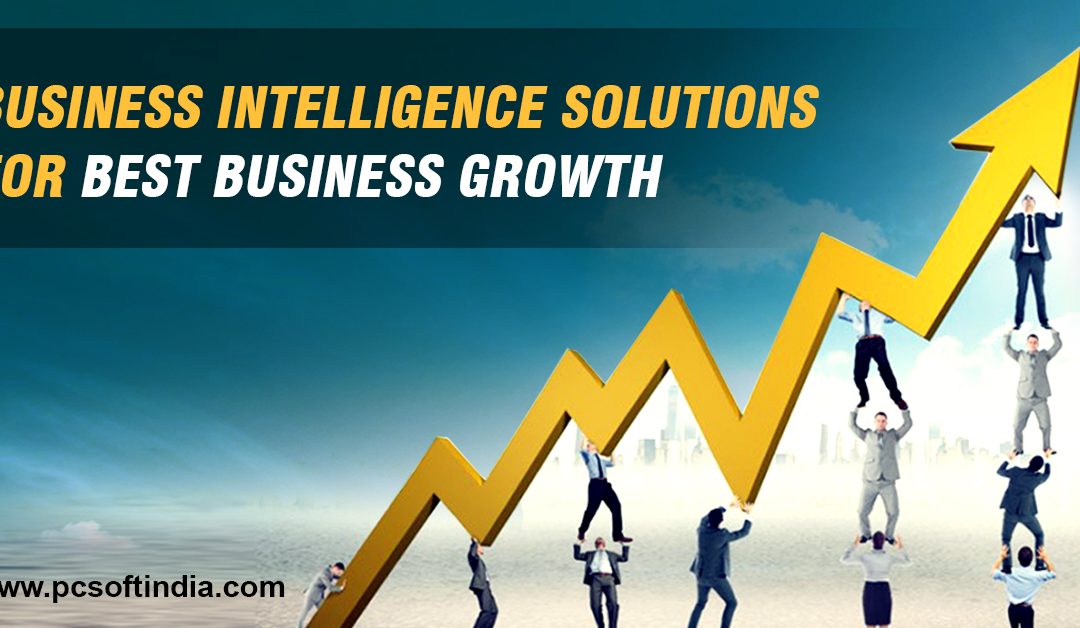Overview Business Intelligence:
Technology has been extensively affecting human lives and so is for the business worlds. Earlier businesses handled their operations manually but today smaller as well as the larger organizations are adopting the ERP (Enterprise Resource Planning) with the most updated tools like the analytics, Business Intelligence, and cloud-computing. The latest technology is now advantageous to offer you the most precise means to discover events and facts while they are occurring and to forecast challenges and issues before they take place.
The advantages of Business Intelligence:
The present scenario of businesses requires top class tools that help to greater productivity and wider scope in the future. They require right analysis, visualization, and reports that define proved success for the entity. Some of the advantages can be specified as below:
It offers Significant Perceptions:
You can recognize business areas for improvement, regulate market position, calculate product viability, gauge demand, and supply, spot sales opportunities that help to improve lead generation, learn customer behavior analysis, and more. You can eliminate the prediction work and implement analytical data to enhance business operations, activities and tasks.
It offers right Targeted View:
Decision makers get a complete image of corporate performance through classic Business Intelligence features like scorecards and dashboards. You can modify metrics, (KPIs) Key Performer Indicator and milestones to bring into line your business planning and goals, and design your business’ health through an incentive range.
It Integrates Information:
Instead of logging into different applications, sources, and systems, you get organized and filtered data in real-time from a central administrator, extremely reducing time to transfer and import data. Having data under one roof interprets to competency and savings.
It reorganizes Business Operations:
Business Intelligence takes out the difficulty connected with business processes as it mechanizes analytics which is a complicated task combining statistics, projecting analysis, computer modeling, benchmarking and other procedures, so you do not have to do the calculations and measurements manually, and free you up to focus on other important decisions and matters.
It offers Easy Analytics:
Earlier, analytics was a burdensome, expensive, resource and labor exhaustive undertaking that needed an entire IT team to manage for days at a time. Now, business intelligence software has simplified accessibility and its usage, permitting even non-analysts and regular users to sharply accumulate and process the information, ultimately simplifying the power of analytics and forwarding then from the hands of few people to numerous other people.
Business Intelligence Tools for Large Players:
Consequently, big market entities are investing greatly in influential business analytics tools, not only because of their large important databases and strong presence i the market but also because of developing trends that are complex to forecast. Shortly, bigger businesses require Business Intelligence tools to earn the most from the least resources and ensure no market inequity avoids that from occurring.
For larger businesses, you need a Business Intelligence system because:
- It operates large amount of data that would take ages to analyze yourself
- It discharges all kind of actionable intelligence boundaries that include locations, server logs, and access to various markets
- It helps them customize sales regardless of the number of clients they must pay visit to
- It saves resources and time
- It offers prompt and real-time solutions in essential moments
- It makes corporate data accessible 24/7, and from different devices
- It secures sensitive and enclosed corporate information
- It helps plan out precise forecasting for future
All of these are to keep your business unsolidified and make ready for current and future business environments. Business Intelligence allows you to convert big raw data into understandable information that are many times visualized in cooperative dashboards which can further be inquired and filtered to bring more relevant perceptions.



